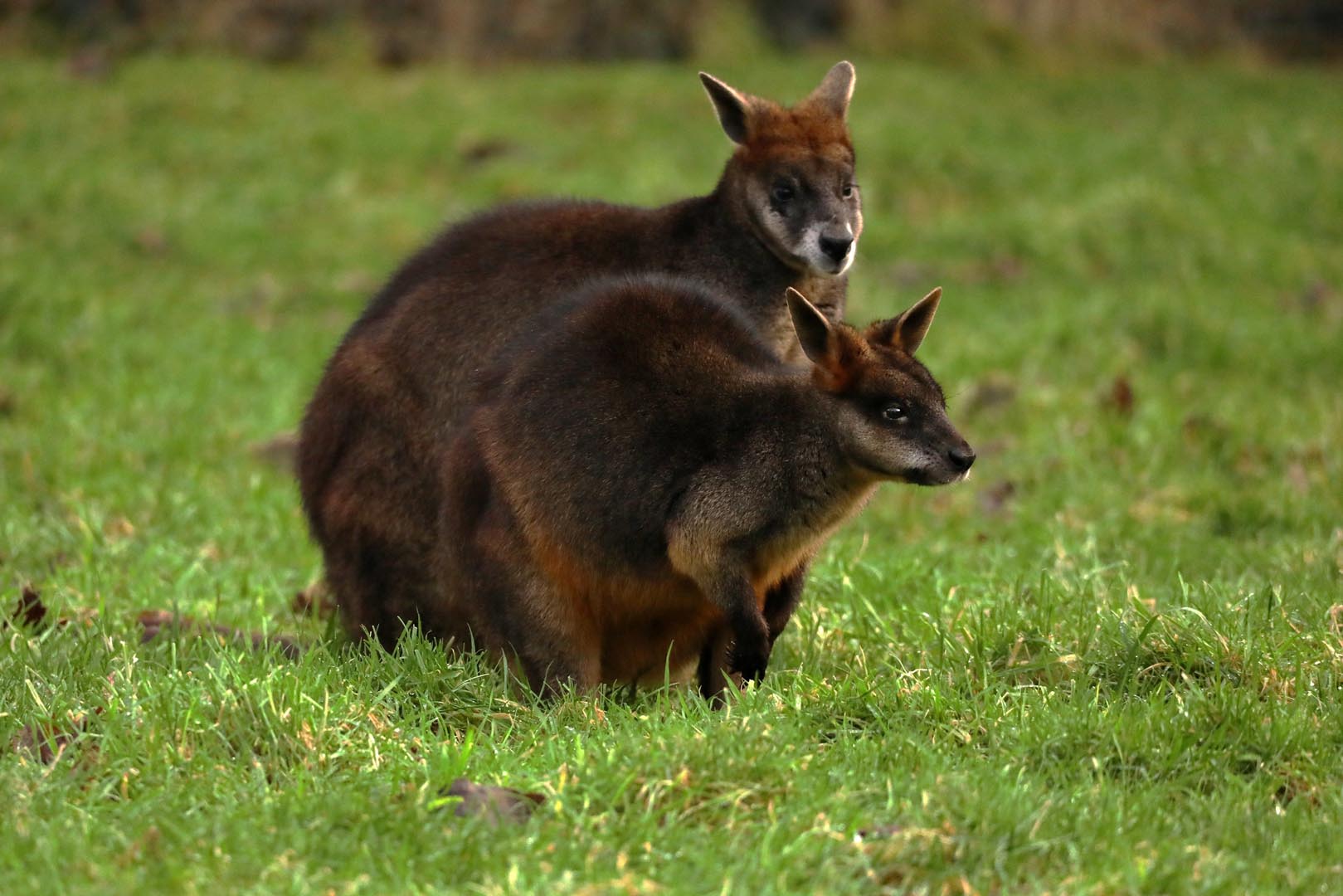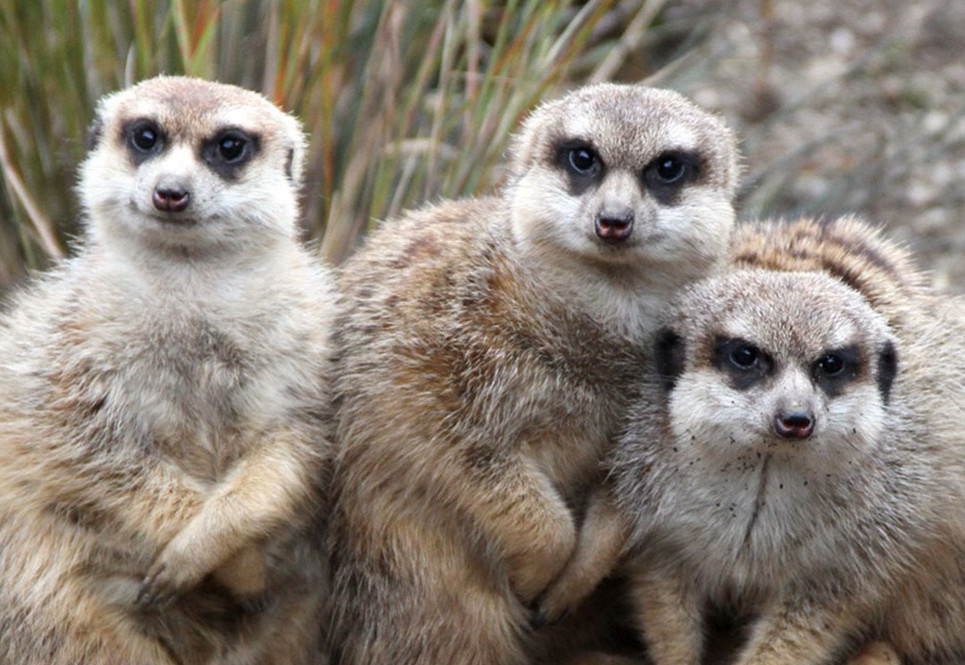Swamp wallaby
Wallabia bicolor

We are home to six swamp wallabies at Wallaby Walkthrough – Allibo, Kindal, Marcello, Kermit and Luca.
They resemble kangaroos (who can also be spotted in Wallaby Walkthrough), but are smaller and have longer fur.
Population
Increasing
IUCN August 2018
Diet
Herbivore
Habitat
Forest
Fact file
Swamp wallabies have a mixed diet feeding on bushes, ferns, flowers, grasses, herbs, plants, shrubs and tree saplings. They can be found grazing in pasture, agricultural crops, and exotic tree plantations
Their molars are specially shaped to help cut through the coarse, thick vegetation of their diet
After mating, a tiny embryo (which is the size of a jelly bean!) crawls into the pouch of the female wallaby and attaches to a teat where it stays for a few months to develop. When the baby (called a joey) is ready to emerge, they poke out their mother's pouch before fully emerging

How we're helping
Like all the animals in our care, our swamp wallabies are amazing ambassadors for their relatives in the wild and help hundreds of thousands of people connect with nature every year. They encourage visitors to learn about the threats facing wildlife and the action they can take to help create a world where nature is protected, valued, and loved.
As a wildlife conservation charity, we care for the animals here at the zoo and work to protect species at risk around the world. From providing expertise in genetics and veterinary health to protecting wild places with local conservation partners, and even restoring threatened species to the wild, we are active where we are needed most.
Find out more about RZSS conservation
